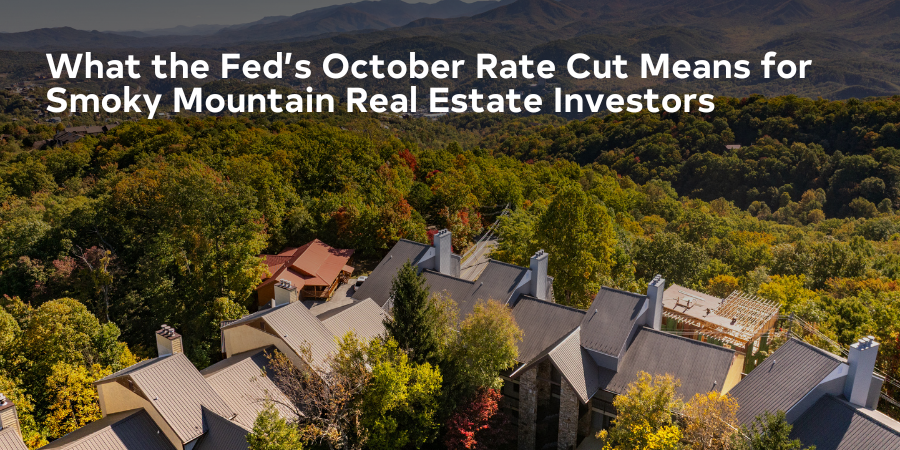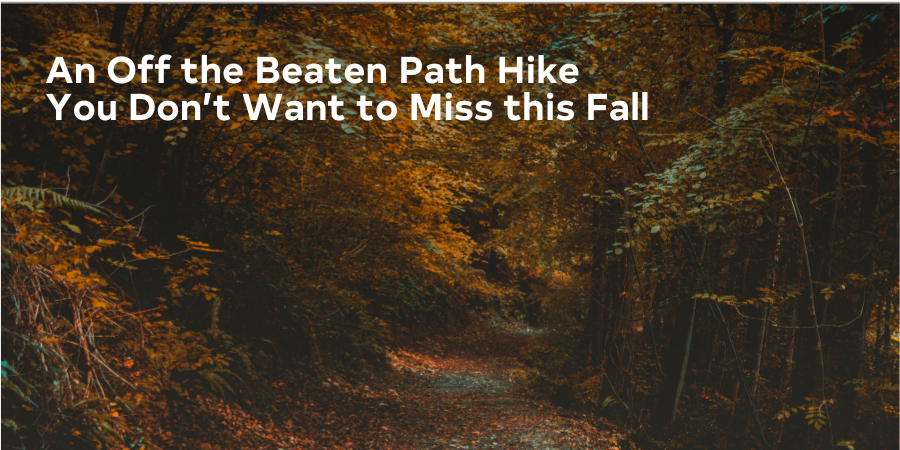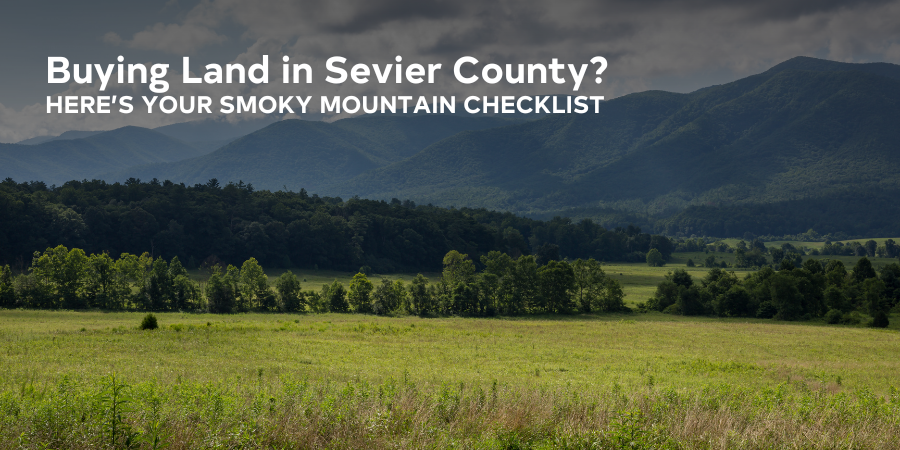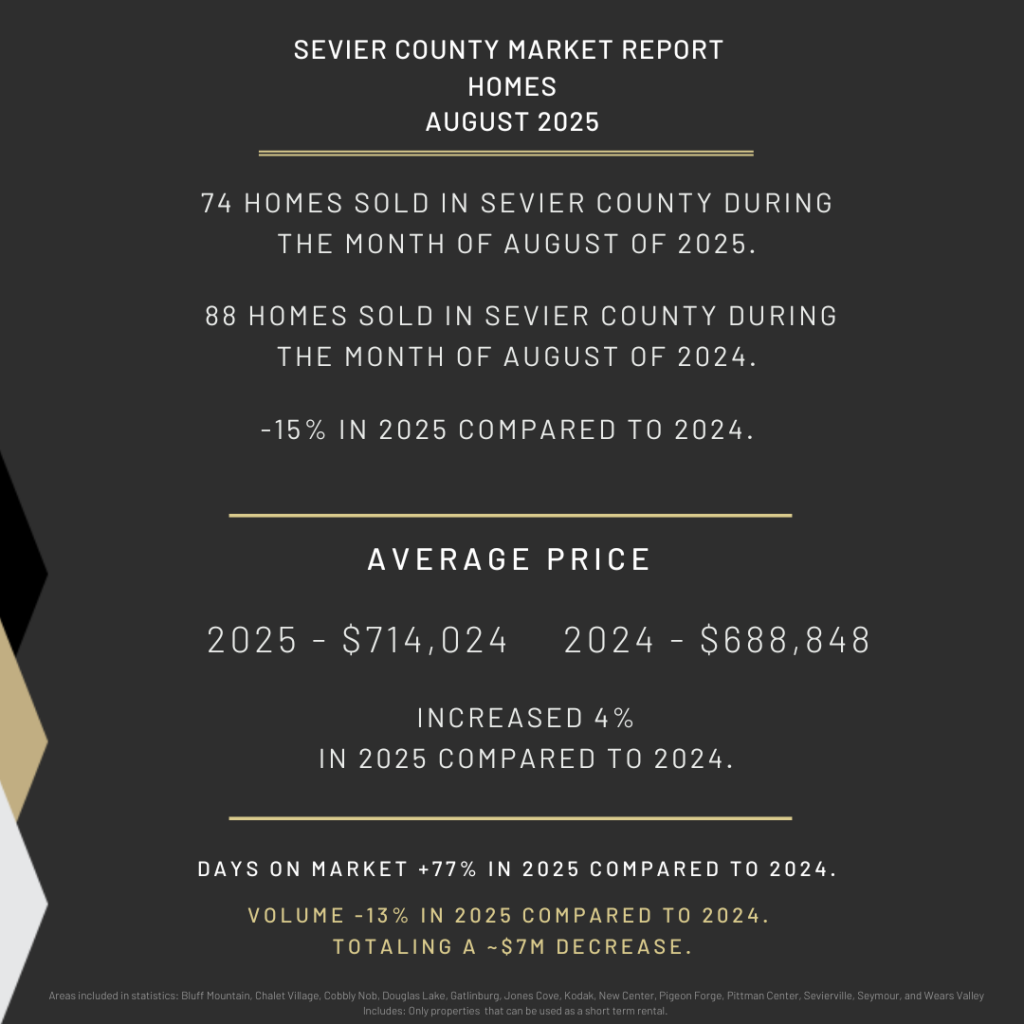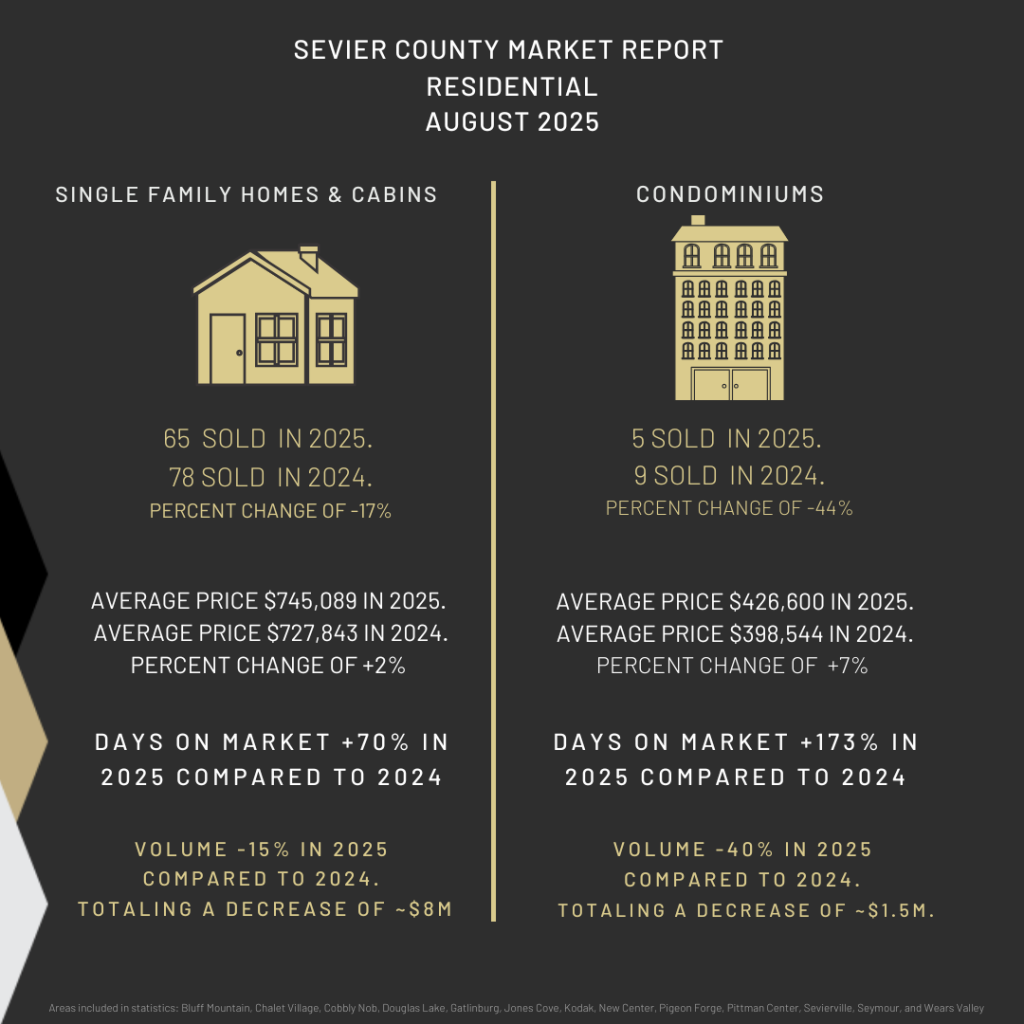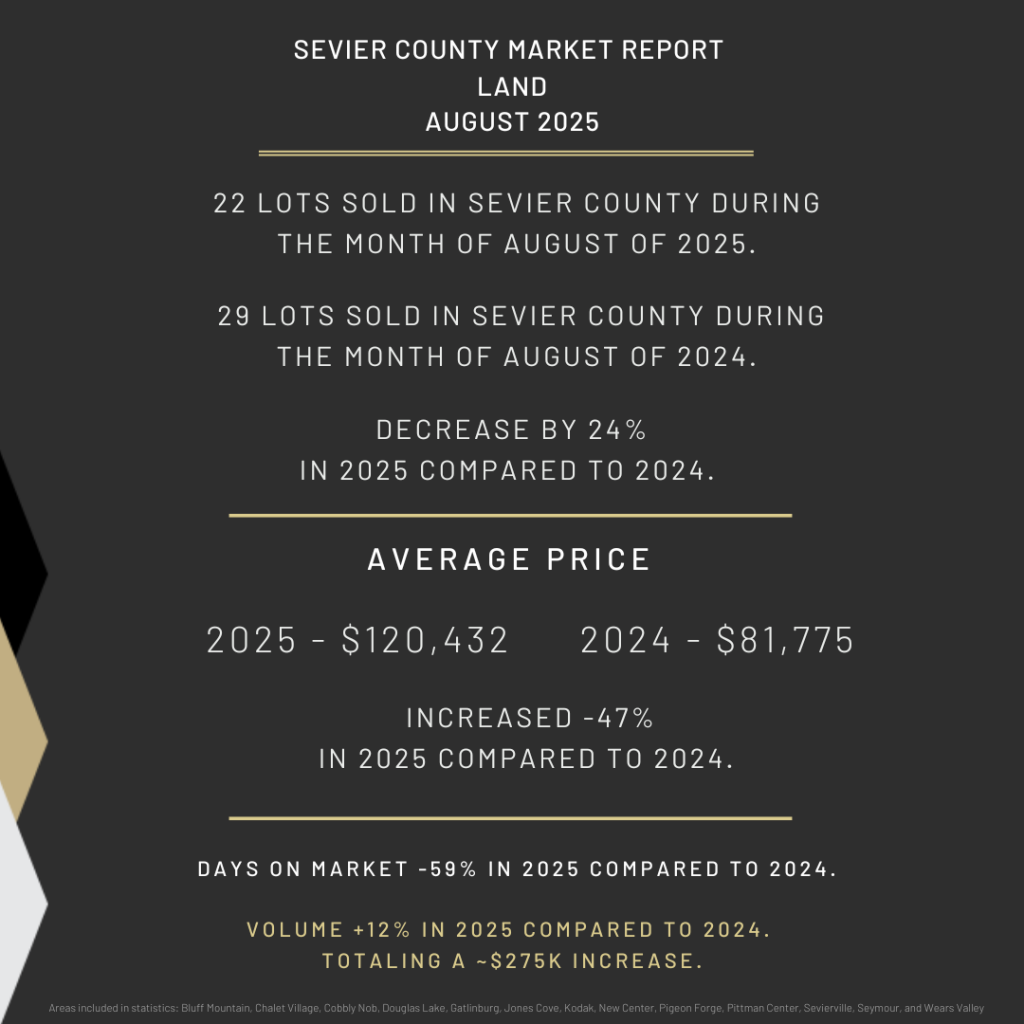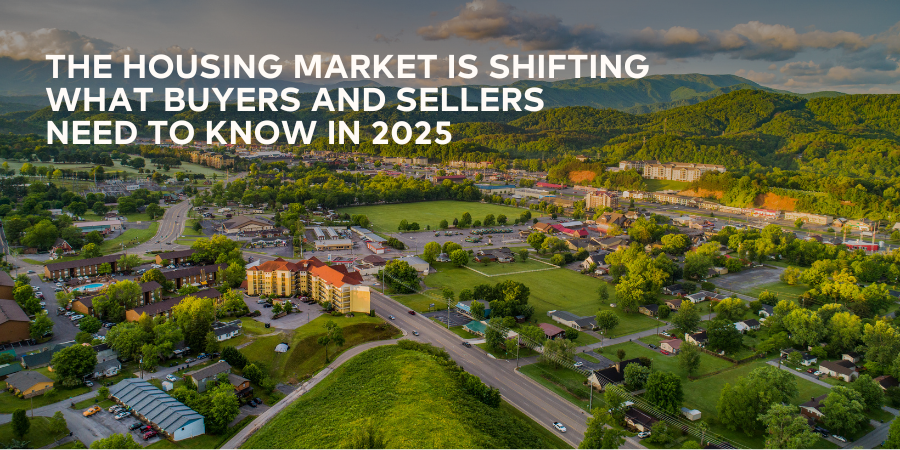As we move through the final quarter of 2025, the Smoky Mountain real estate market continues to show strength, particularly in the single-family home segment.
Even with interest rate fluctuations throughout the year, our local market has held steady, posting higher prices, stronger sales, and a significant year-over-year gain in total volume.
If you’ve been wondering what this means for buyers, sellers, and investors across Gatlinburg, Pigeon Forge, and Sevierville, here’s a closer look at how the numbers stack up.

Market Overview: October 2025 vs. October 2024
Residential Sales:
- 103 homes sold in October 2025, up 49% from 69 in 2024.
Average Price:
- Up 20.6% year-over-year, from $659,981 to $796,155.
Days on Market:
- Up modestly from 82 to 91 days.
Price Per Square Foot:
- Down slightly (-11%) to $346/sq.ft.
Total Volume:
- Up 80% year-over-year, from $45.5M to $82M.
Single-Family Homes Drive the Market
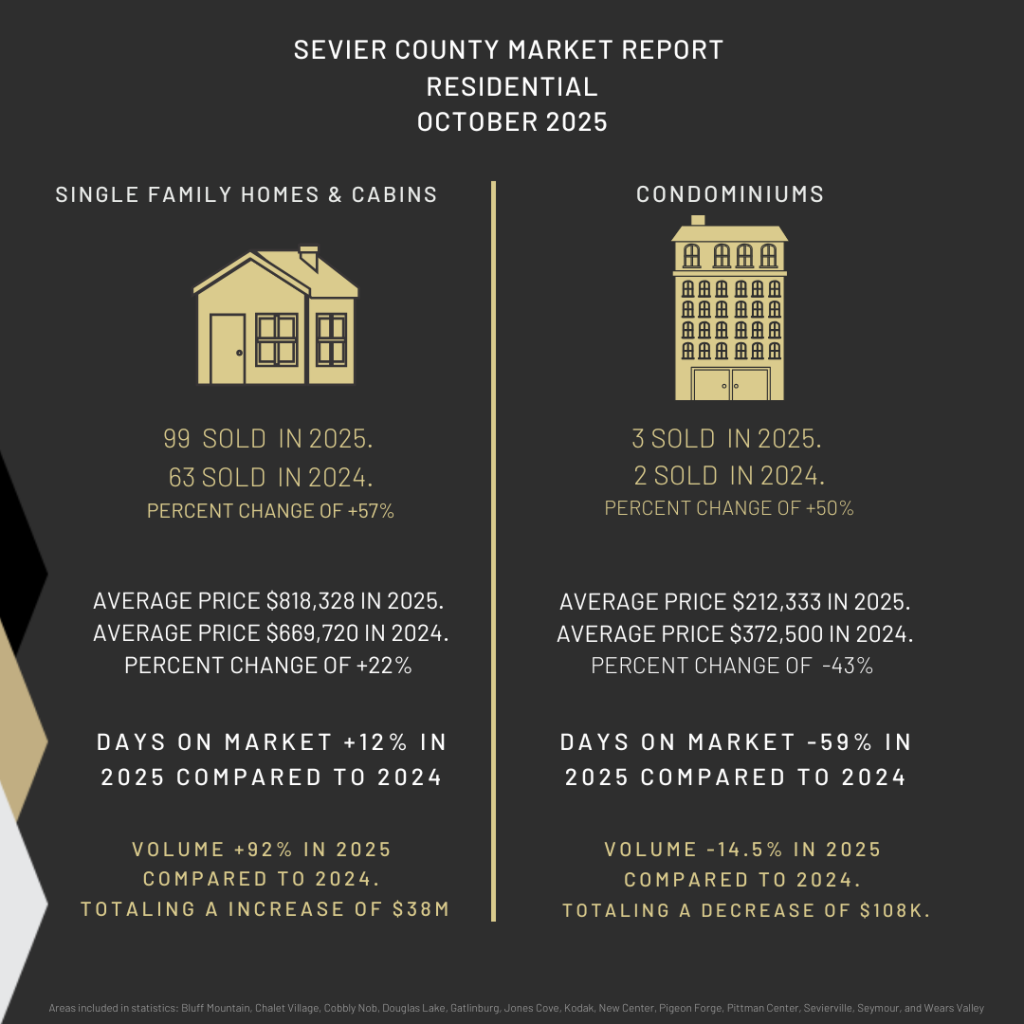
Single-family homes continue to lead the charge across Sevier County:
- 99 single-family homes sold, up 57% from last year.
- Average price: up 22% to $818,328.
- Total sales volume: up a remarkable 92% — from $42.2M to $81M.
Even though price per square foot dropped slightly (-6%), that’s largely due to a higher number of large-format cabins selling this year, not a sign of market weakness.
Condos: Smaller Pool, Quicker Sales
Condo activity softened slightly:
- Average price: down 43%, from $372,500 to $212,333.
- Sales volume: down 14.5%, but
- Days on market: dropped 59%, meaning condos that do list are selling quickly if priced correctly.
Land & Lots: Holding Value Amid Fewer Transactions
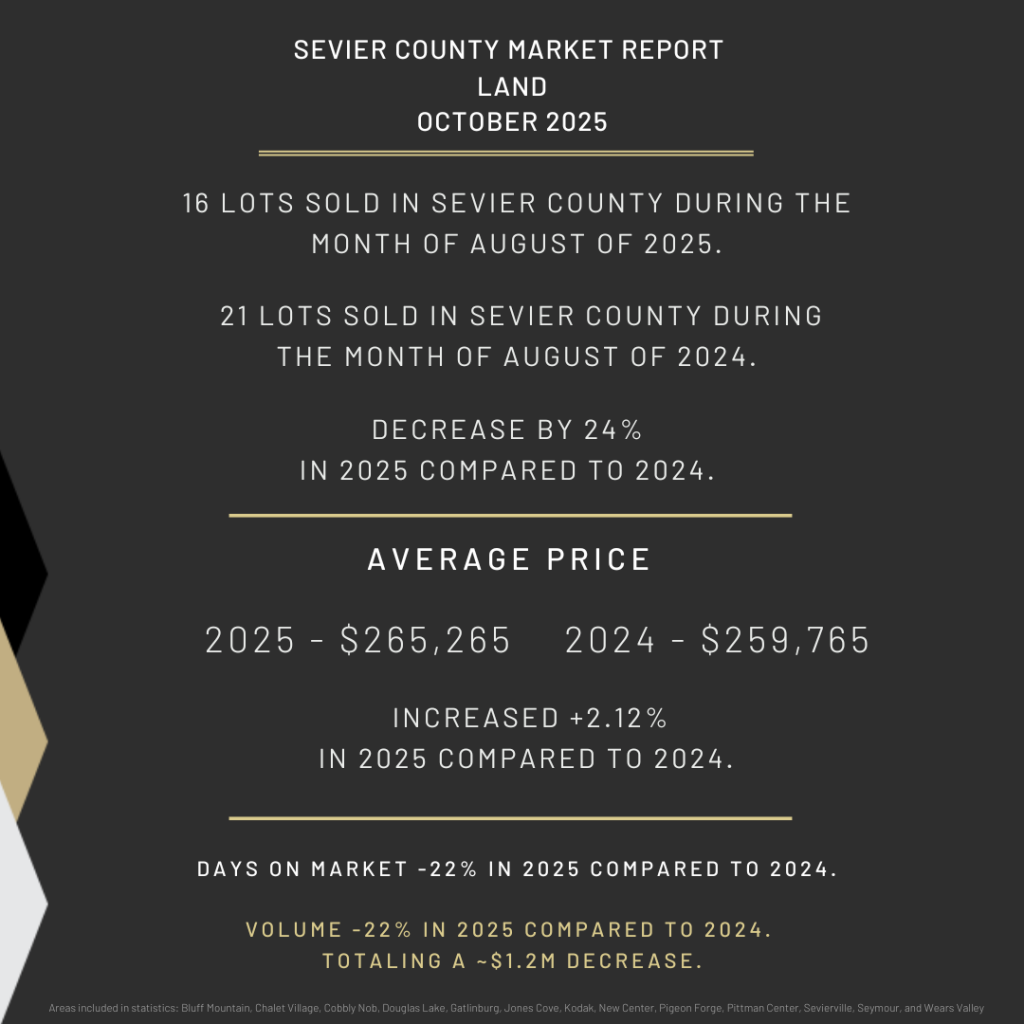
Land sales volume dipped 22% year-over-year, though the average price per lot rose slightly to $265,265.
Year-Built Trends: What’s Driving Higher Prices?
We also analyzed average sale price by year built, comparing 2024 and 2025 sales. The results reveal clear buyer preferences.
When we analyze sale prices by year built, the results aren’t linear and that tells an important story. If age alone dictated price, older homes would sell for less across the board. But that’s not what’s happening in the Smokies.
Newer Homes (2020–2025)
- Average price: climbed from roughly $980K in 2024 to $1.1M+ in 2025.
- These homes combine modern finishes, low maintenance, and rental-ready amenities — a combination that continues to command top dollar.
Mid-2000s Homes (2005–2009)
- Still performing exceptionally well, with multiple years averaging $730K–$1.3M.
- This period represents many of the large-cabin builds that dominate the short-term rental market — buyers know their income history and reliability.
1990s–Early 2010s Homes
- Prices range from $450K–$650K, with modest year-over-year appreciation.
- Updated homes in this age bracket continue to attract both investors and second-home buyers looking for value.
Pre-1990s Construction
- Wide variation from $135K to over $700K.
- Well-maintained legacy properties with character and views perform strongly, while those needing renovation sell at a discount.
Buyers are rewarding quality and turnkey condition over age alone. Whether a cabin was built in 1995 or 2023, what matters most is how well it’s been maintained, updated, and positioned for rental success.
What This Means for Buyers and Sellers
For Buyers:
Inventory is still competitive, but opportunities remain especially for those ready before the winter slowdown. Rising prices show that waiting likely means paying more in the new year.
For Sellers:
This fall’s numbers favor listing now. Homes are taking only slightly longer to sell, and pricing power remains strong. Proper maintenance, updated finishes, and strong rental performance data can help command top-tier offers.
For Investors:
2025 continues to reward the data-driven investor. The most profitable STR properties are newer builds with proven amenities and solid management. With rental demand steady, now’s the time to refine your portfolio before next spring’s rush.
Whether you’re planning to buy, sell, or simply track your investment’s performance, our team is here to help you interpret the data and make confident decisions.
Ready to explore the numbers behind your next move? Contact the Jason White Team for a personalized market analysis or to see what’s currently available in the Smokies.

